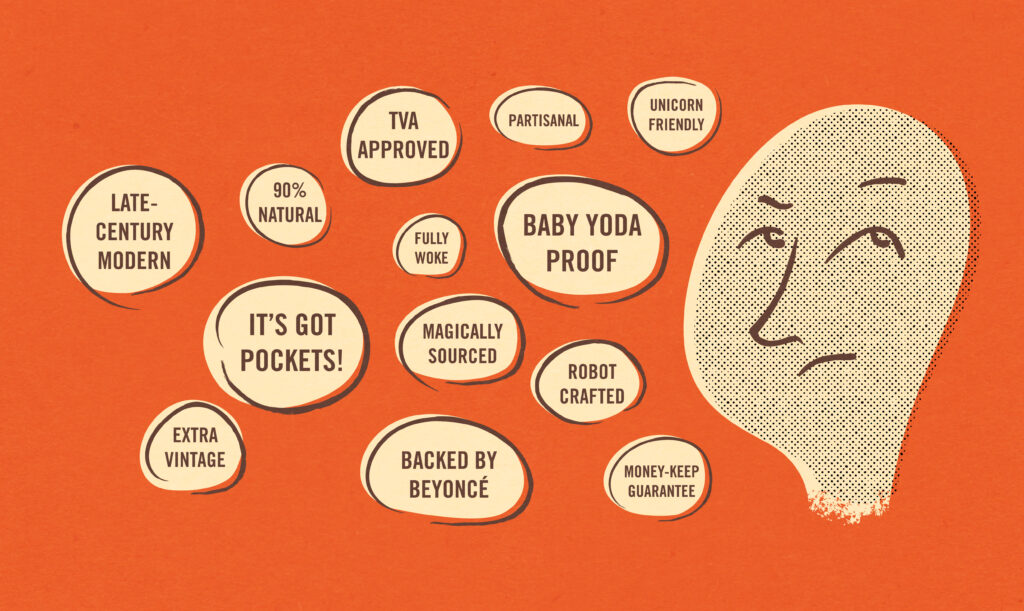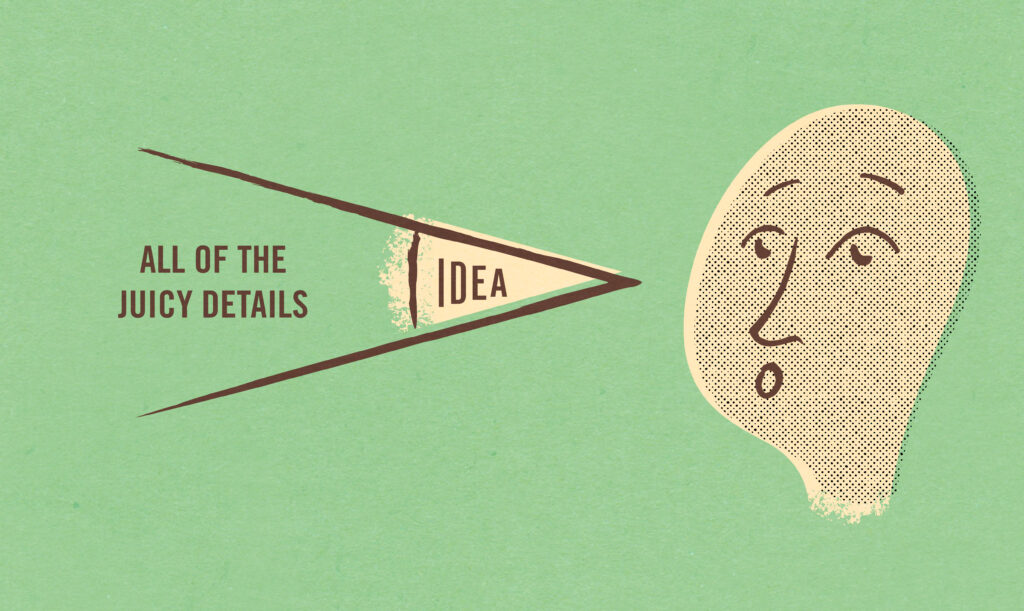
It’s a question every brand has to wrestle with. How are you supposed to break through the roar of thoughts, emotions, conversations, and TikToks tornadoing through a person’s brain at any given moment?
Remember, this person isn’t just distracted. They’re hardened. Hostile. And you? You’re another ****ing ad, interrupting whatever it is they actually want to see. They’ve already been subjected to between 6,000–10,000 of your obnoxious relatives in the last 24 hours. 250,000 in the last month. The better part of three million in the last year.
No one wants to think about your brand.
Thing is, you need them to. The survival of your business depends on it.
There’s good news, though. Because the way most brands respond to the question of how to get in someone’s head is by losing their own. They frantically throw out one product benefit, then another, then another. More benefits have got to be better, they reason. Consumers love benefits.
The result is that something like 9,990 of those 10,000 daily ads become nothing more than a glorified bullet list, minus the bullets. You might imagine it looking something like this:

Spray and pray, baby.
Odds are, those prayers will go unanswered. No quantity of benefit-bullets can replace the quality of a singular idea. Ideas multiply benefits into something exponentially more interesting. And when you’re in a battle for attention, nothing is more important than being interesting.
This is why, in the world of branding, we obsess over brand ideas.
Brand ideas aren’t about getting rid of benefits. They’re a way to reorder those benefits into something coherent. They replace the “benefit spray” pictured above with a wedge—something keen enough to find its way past the clutter and actually stick.
Sharp ideas are a brand’s best chance at breaking through.

Once you’re in, supporting product benefits can play their roles.
Okay, but what’s a brand idea?
There are many kinds. A brand idea can center on an emotion—the way millions of people associate Dove with self love.
Ikea’s brand idea might be better classified as a belief: that the average person deserves a well-designed home, too.
A brand idea can even be one (1) product benefit. Maytag led with the idea of unrivaled reliability, using their idle repairman to drive the benefit home.
What detergent to put in that new Maytag? If you want great scent, you probably reach for Gain. If you’re fighting tough stains, it has to be Tide. While both detergents have similar ingredients that offer similar results, they use the brand ideas of “scent” and “fighting stains” to differentiate themselves.
Other varieties of brand ideas include promises, challenges, and higher purposes. What’s important is what they all have in common: good brand ideas get into our heads by using focus. They’re relevant and interesting. Simple. Pointed.
Just not bullet-pointed.
